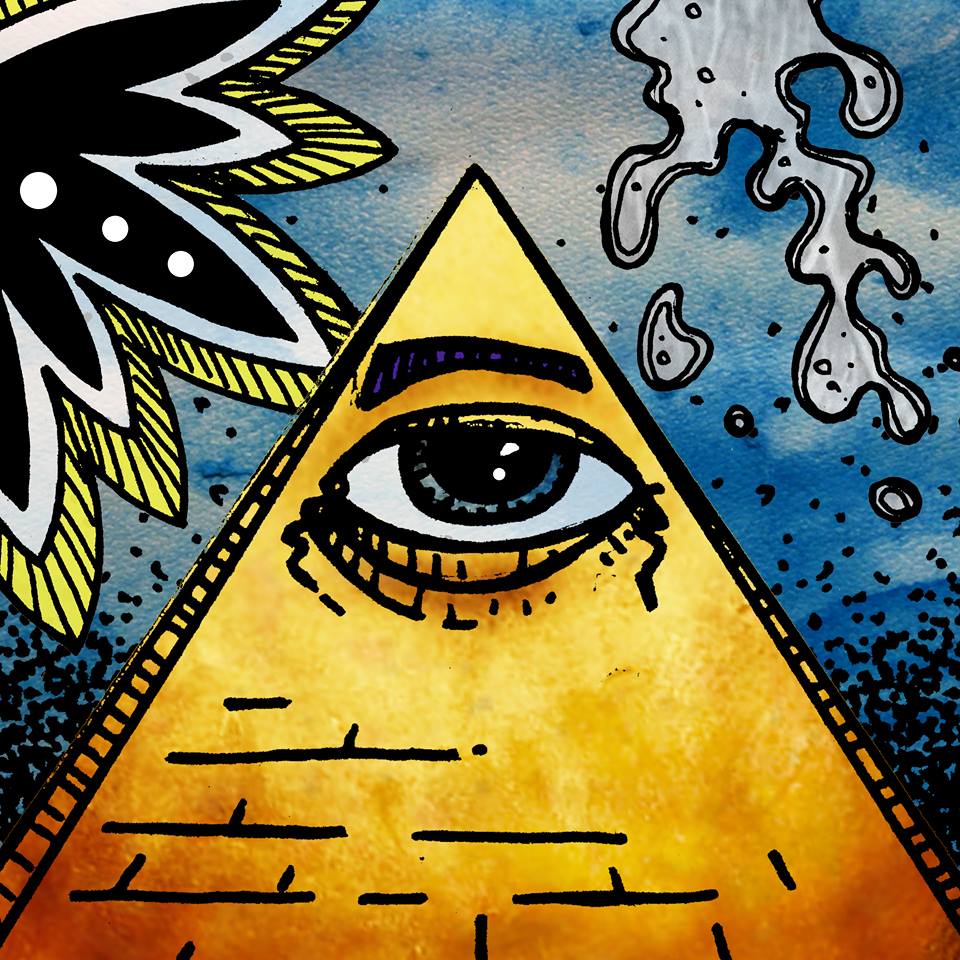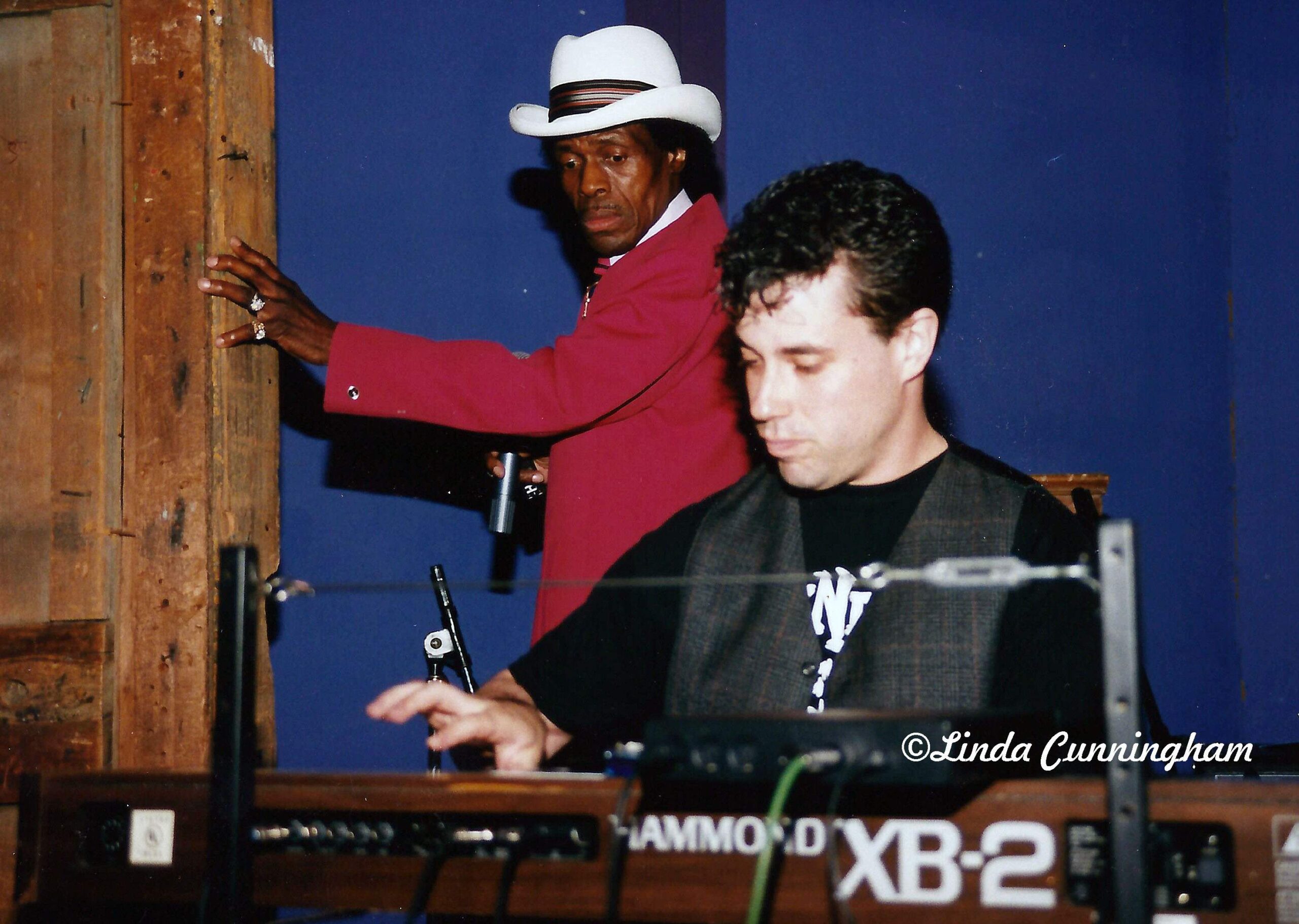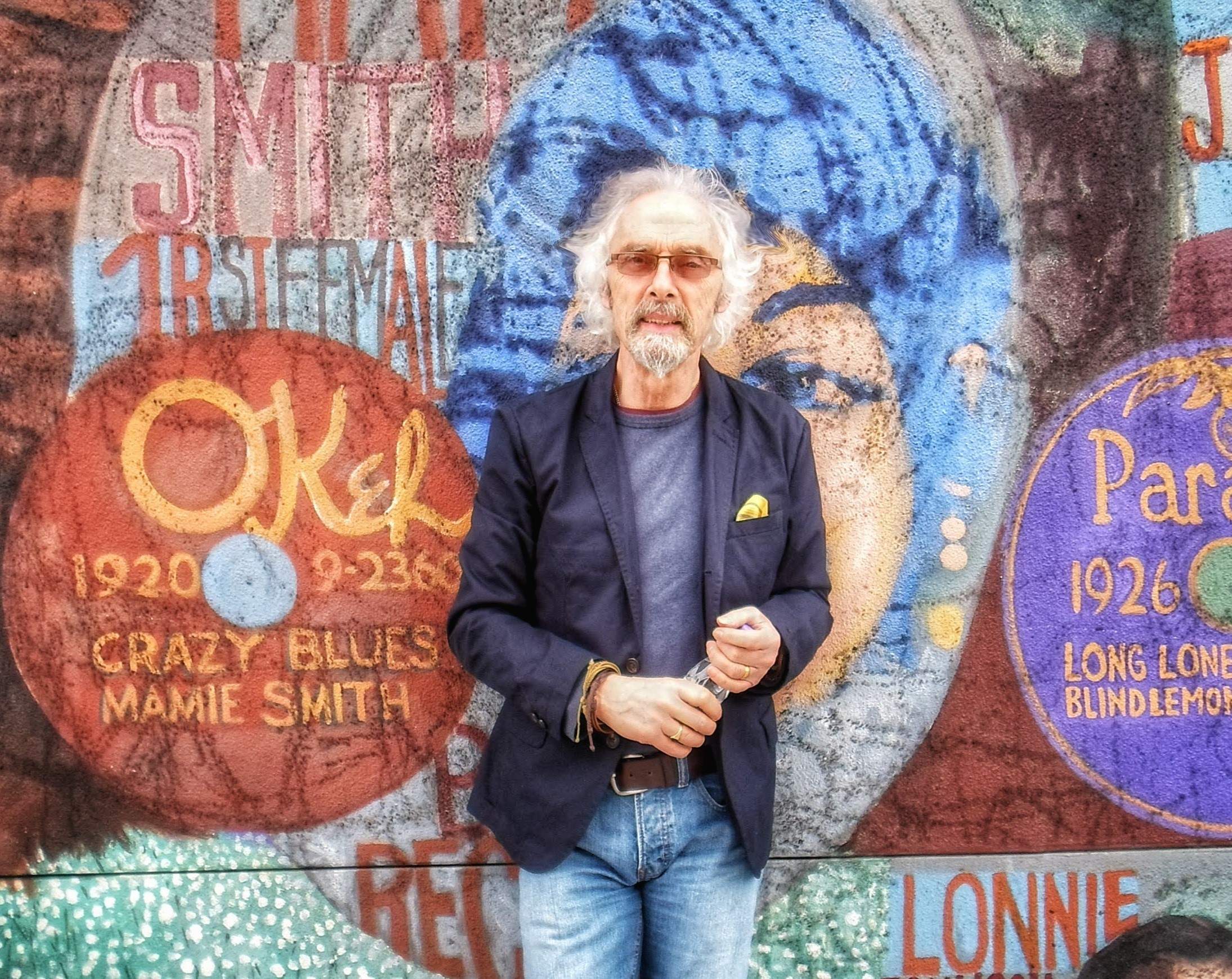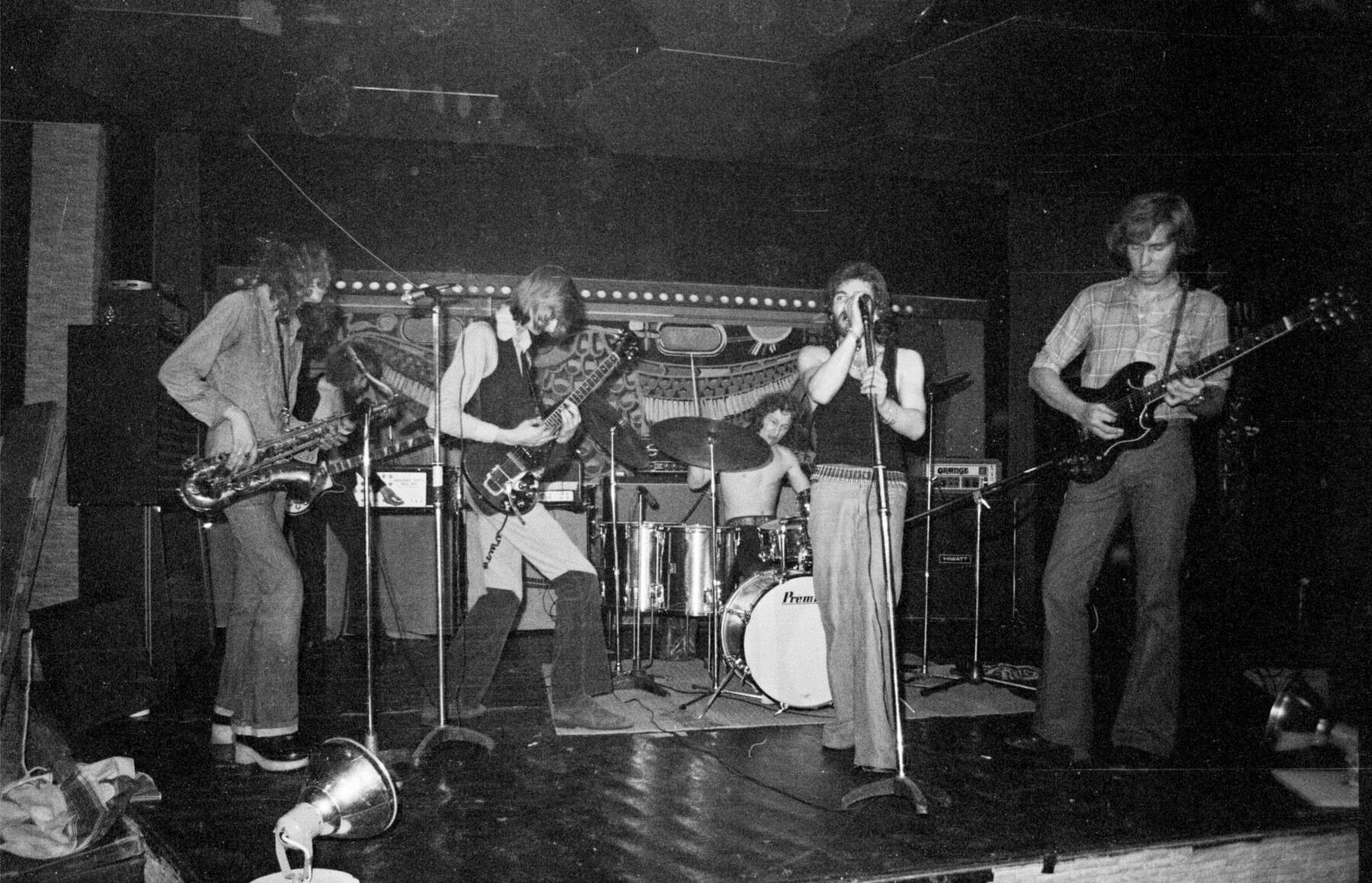Johnny Iguana | Interview | At Delmark: The 1917 Steinway Sessions
Chicago’s own Johnny Iguana stands at the confluence of tradition and creativity. With his upcoming album ‘At Delmark,’ arriving on April 11, 2025, he offers a singular vision for solo piano blues.
The album marks a notable departure from his previous full-band work on ‘Chicago Spectacular.’ Recorded on the 1917 Steinway B housed at Delmark, every note is captured in a single, unedited take. This commitment to live performance channels a moment of creative truth, a tradition deeply rooted in the Chicago blues heritage.
Iguana’s journey spans decades, having played alongside luminaries like Junior Wells and Otis Rush. His career reflects an innate ability to absorb influences from every corner of the musical world while still honoring the legends who paved the way. The album reveals an artist unburdened by convention, embracing spontaneity and a rigorous love for his craft. His interpretations of blues classics merge with original compositions, offering fresh perspectives on familiar themes.
This is a return to the heart of the blues—just Iguana, a piano, and the pure, unadulterated expression that comes from doing things exactly as they sound in the room. The album is poised to be a significant milestone in his storied career.
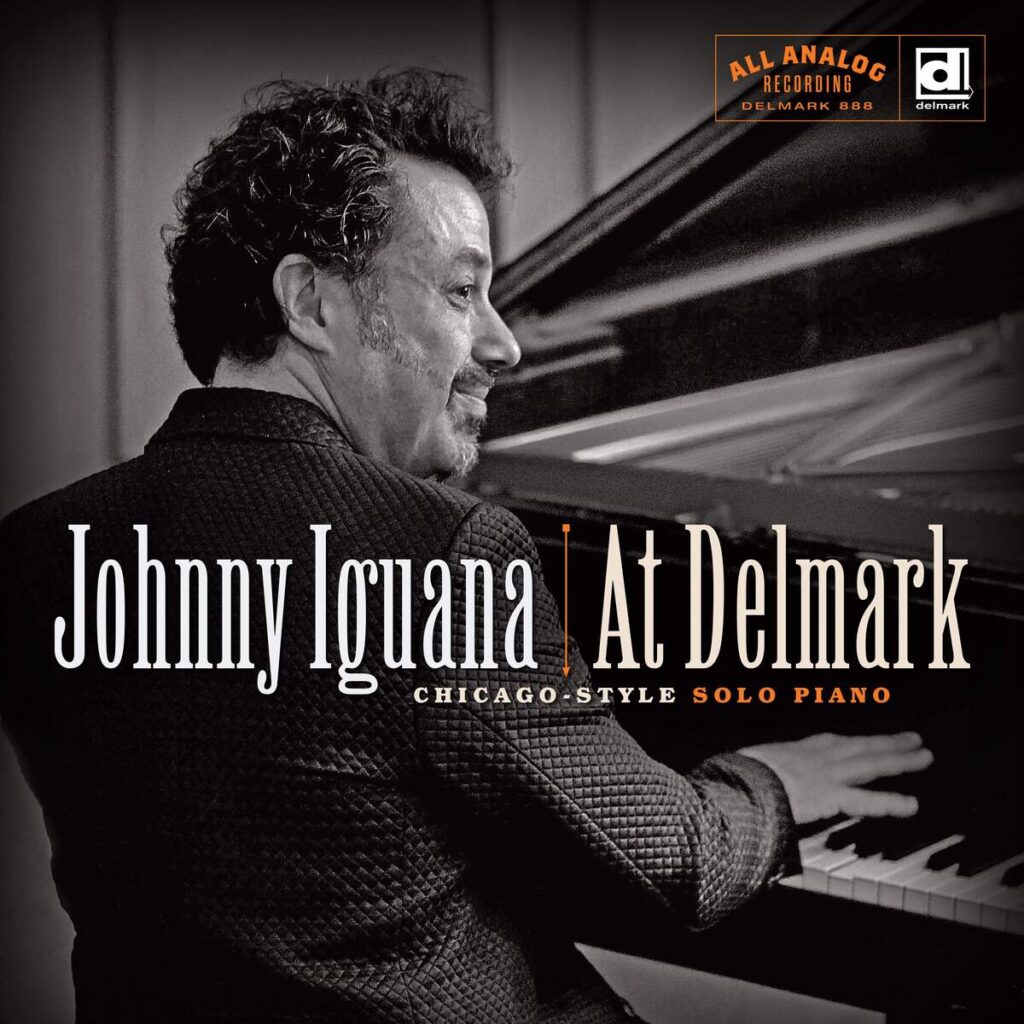
“The whole idea was that this record would fit into the long history of Delmark’s solo piano recordings”
So, recording straight to analog tape in one take… kind of a “no room for error” vibe, right? What mindset did you have to get into to just go for it, especially with the whole “unpolished” thing?
Johnny Iguana: This was something that I, Julia, and Elbio (the two heads of Delmark Records) agreed upon right away. The whole idea was that this record would fit into the long history of Delmark’s solo piano recordings, and of course, that means no edits. I told myself to take chances, not be too careful, and really go for it—just like I do at concerts and when playing at home. So, there are moments where “my car almost goes off the road,” but that’s exactly when you know what you’re hearing is a live, unedited (and not fully mapped-out) performance. I found a certain thrill in this, and I do think it comes across. I am a very spontaneous and excitable player. There’s no hope of perfection in me. I only had a basic plan for each song and let my fingers roam where they wanted to go.
When you sit down at the piano, is there some kind of magic that just happens, or do your hands already know exactly where they’re going? How much of it is instinct vs. thought at this point?
I particularly prize a combination of thinking and magic—of a meticulous plan and a sudden burst into unknown territory. There is all of that here. I think it will be clear to listeners that I could never exactly re-create this album…these performances. These are what happened suddenly after “Rolling!” was yelled at me. I guess you could say these tracks are me yelling back…with my fingers. The voice from the control room yells “Rolling!” and then my fingers yell “Playing!”
You’ve tackled such a wild mix of artists: Little Brother Montgomery, AC/DC, Neil Young, and more—what was it about these songs that made you want to dive into them? What surprised you once you gave them your own spin?
The cover songs here range from ones I’ve been doing on stage for years to ones I just started playing. The original compositions are all very new. In fact, some were arguably still in development when these sessions arrived…so, there is searching and discovery caught on tape. I thought all the covers made for entertaining solo piano pieces…all have blues on top or somewhere inside…at their root. I made slight tweaks to some of the chords to make them work best as a solo piano piece. I also threw in some Lee Morgan into the Junior Wells song because it occurred to me how well the two songs (‘Messin’ with the Kid’ and the quote from Lee’s ‘Sidewinder’) work together. There’s no disruption in the groove. I did find, especially with the Little Brother Montgomery piece, that there’s no use in me trying to imitate the original artist. I can use the original artist as a springboard, but I can only play like myself and play the riffs and solos that come naturally to me after playing the melody. The most faithful rendition here is the AC/DC, actually. I didn’t play Angus’s solo, but I did follow the roadmap of the entire original track.
You’ve been vocal about Junior Wells being a huge influence on you, but what is it about his vibe, beyond just the music, that left a mark on your career?
Junior gave me a lot of confidence with the praise he gave me. He had such a swagger about him, and it’s infectious, even just listening to his records now. He had a signature style but was always right there in the moment. He helped me throw up my hands and say, “Well, here we go,” and march out on stage knowing I was gonna play some hot stuff. You just need to take that same approach to the studio, and I’ve definitely gotten more comfortable and strong in that regard.
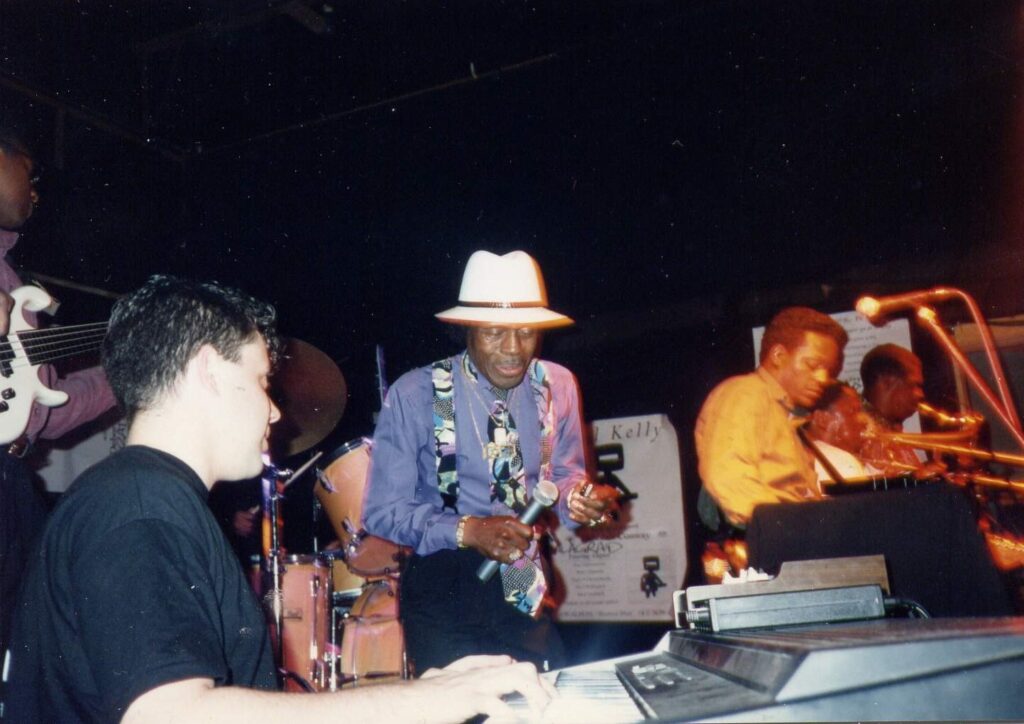
Chicago blues has a long line of piano legends like Otis Spann and Pinetop Perkins. Do you see yourself as part of that crew, or do you feel like you’re doing your own thing with it?
Some of the notes I originally wrote down about the making of this album said this (these words have not been published):
Is this album part of the tradition of Chicago blues solo piano? If so, why does it sound so different from a solo Otis Spann recording…a solo Little Brother Montgomery recording? The great thing about being a piano player is that you are like a whole band: bass, rhythm, lead…melody, harmony, backing grooves, and solos. I am my own band, and I don’t know how to sound like the band that was Otis Spann or the band that was Little Brother Montgomery. Why would I try? Some do try, but those people are tribute bands. Each time I came back to Delmark Studios for another session, what I heard in the control room upon playback was, inescapably, the full band that is me. This band has been together a long time now, it’s somewhat of a miracle. All still alive. Still fighting. Still too loud. What fun.
I find it an honor to be part of the continuum of the Chicago blues piano players. Spann will always be the best for me. Maceo was a powerhouse. Sunnyland…so many greats. I’m playing a lot of piano every year, and I think I’m getting better all the time. I can’t help the different influences I have (classical, punk, rock…all mixed in with blues), but Little Brother Montgomery certainly mixed styles and wasn’t just a blues piano player. So, there!
After all these years of playing with blues legends, what’s the difference for you when it comes to playing the classics versus making your own stuff that still carries that same spirit?
I have been in my own bands since I was 14 years old. Writing original music actually precedes “playing the blues classics” for me. Even when I play the classics, I always stray…a lot. When I am playing a classical piece, with sheet music, I try to play it “perfectly.” That does not go for any other music, for me. I just try to have fun with it and express myself through it. Even when I am “playing the classics,” I AM “making my own stuff.”
This album feels so unfiltered—what do you hope people hear or get out of it that they might’ve missed in your past work?
A lot of people have loved the Claudettes (my group I’ve had for years now) and other bands I’ve been a part of, but some want me to just kind of “go off”…play, play, play, play that hard-hitting piano that they witness when I take solos on stage. I’ve had people say that they love the Claudettes’ songs, but also want me to be a wildman on piano at those shows. I certainly did that here, on this Delmark album. You’re right: no filter. My previous Delmark album had a lot of piano, all over the place, and lots of solos I’m proud of, but it wasn’t just me, me, me, go, go, go all the way through. It was an ensemble record. Not this one. As the subtitle says, it’s “Johnny Iguana: Alone and Acoustic and Totally Wired.”
“Those pieces arrived as organically and naturally as can be”
You came up in the punk/rock scene before diving into the blues… do you think that early energy affects the way you play, especially when it comes to rhythm, attack, or structure?
Yes, as a matter of fact, I usually listen to the playbacks and say to myself, “Why so fast? Why so hard? Why so loud? Slow down. Deep breaths. Take it easy.” But I’m just too excited for that approach, I guess. I am no less excited about this instrument than I was as a teenager. Arguably, I’m more excited, because I feel closer to solving the puzzle it presents. I hear punk in old blues, and I hear classical in synth-pop…it all runs together, and I don’t feel particularly compelled to separate styles and approaches. I think there’s a “musical honesty” that reaches people, and I hope they enjoy it on this album. I hope the original compositions don’t sound “weird for the sake of weird.” Those pieces arrived as organically and naturally as can be. Are those pieces “blues?” Well, Delmark has released blues, jazz, and more. So…I think the genre-blurring is a very fine thing for a Delmark album. But I am calling this a blues album. Gotta call it something. And blues is absolutely the dominant force here.
You’ve always had a thing for literature. Do you see any parallels between storytelling through books and telling stories through your music, especially the instrumental side of things?
I DO like to title instrumentals and find myself inspired by the likes of Erik Satie (the way he left absurd directions to the player on the page) and by Raymond Scott (the evocative titles he used for his compositions). I have long called Claudettes instrumentals “cartoon music.” I don’t set out to tell a story through instrumentals, but as I listen back to new pieces, they paint a scene for me, and then comes the title. I get more literal with the storytelling in all the songs I write (songs with lyrics). But I think I express myself vividly and candidly with instrumentals, too. There’s a lot of humor in parts of these instrumentals, clearly. I call one section “consolation prize music,” and another part clearly happens during a rainstorm without an umbrella, and some sections are a dream or hallucination. I loved how Chopin would do a big storming pounding section, and then it would stop, and a lovely little interlude would enter, and then the storm would return. There’s a lot of that on this new Delmark album of mine. Interruptions and returns.
You’ve played all over the world, from the Middle East to South America and Japan. Does all that travel change the way you feel rhythm or hear music now?
The travel hasn’t really led me to interact with or hear local musicians. I tend to get there, play, and move on to the next place. I wish it wasn’t so, but that’s the reality of it, almost always. My discoveries come from friends and musicians introducing me to new music—from this year, from 90 years ago, from other countries and cultures… and occasionally from inspired film soundtracks, too. Like the documentary Time and its soul-stirring use of this music: ‘Emahoy Tsegue’-Maryam Guebrou: The Ethiopian Nun Who Was One of History’s Most Distinctive Pianists.
That Delmark 1917 Steinway B is such a beast of a piano with all that history in its keys. How did it feel sitting down at that instrument, and did it push you in any unexpected directions during the recording?
It just made it easier than if it were an inferior or uneven instrument. I never once had to compensate for a shortcoming in any particular range of the piano, as is sometimes the case. Sometimes I simply avoid a section of a piano if that area sounds harsh or muted to me. I’ve been lucky enough to sit down at this Steinway a lot, so I was as comfortable as could be. By and large, I love Steinways. But the upright piano I used for ‘Johnny Iguana’s Chicago Spectacular!’ (my 2020 Delmark album) was a 100-year-old, beat-up Chicago-made upright piano (at Shirk Studios in Chicago). We looked up the serial number—it was exactly 100 years old. That would have been a tougher assignment for a complete, no-edits solo album. That upright piano had hammers breaking during the session, and glue was employed.
“It captures a moment.”
Recording straight to analog tape in one take is pretty hardcore. What does it capture for you that digital just can’t?
It captures a moment. One performance. Like the people in our lives we love who, yes, have flaws, but are real and genuine, and we love them. There are “grace notes” here… my hands do tend to fly fast and furious… unexpected notes are struck here and there… but, hey, it’s blues (mostly), not a classical rendition, and so this is not only allowed but, arguably, the good stuff.
This album’s coming out on audiophile reel-to-reel tape too. Have you had a chance to hear it in that format yet? What’s the vibe like hearing your music come through that kind of high-fidelity sound?
I imagine it sounds much like the reels I heard in the control room right after each take. I haven’t heard the produced reels. It’s very cool that people can opt to have it that way. It’s like having me right there in your living room, but you don’t need to feel compelled to put out a bowl of mixed salted nuts for me. Or rum and cigars. But, please, do feel free to put on the reels and invite me over—put that stuff out for me.
Junior Wells got you into Chicago in 1994, right? And his connection with Otis Spann on Southside Blues Jam is iconic. Got any memories from your time with Junior you wanna share with us?
I was SO happy to be able to report to friends and family that, of the nine-person group, Junior was my favorite member. He was a delight. Charismatic, always. Smart, funny, a total rascal. And to hear that voice I’d been hearing for decades… and that unmistakable harp sound. He made me feel so welcome in the band. He invited me to move from New York City to Chicago to join the band after I sat in with them in Boston and Providence, Rhode Island, in early 1994. I was 23, and most of the band members were in their 40s (Junior, of course, was older). They were all very nice to me and didn’t really need to be, but they recognized how much it meant to me to be in THAT particular band. Junior was my favorite.
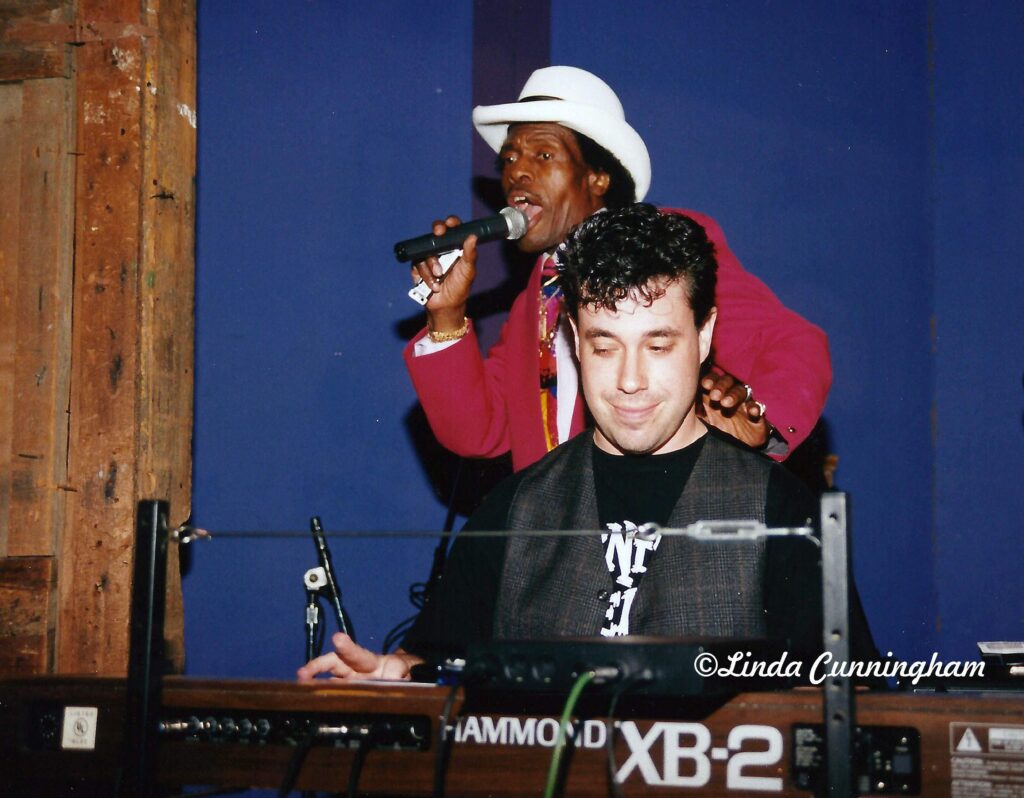
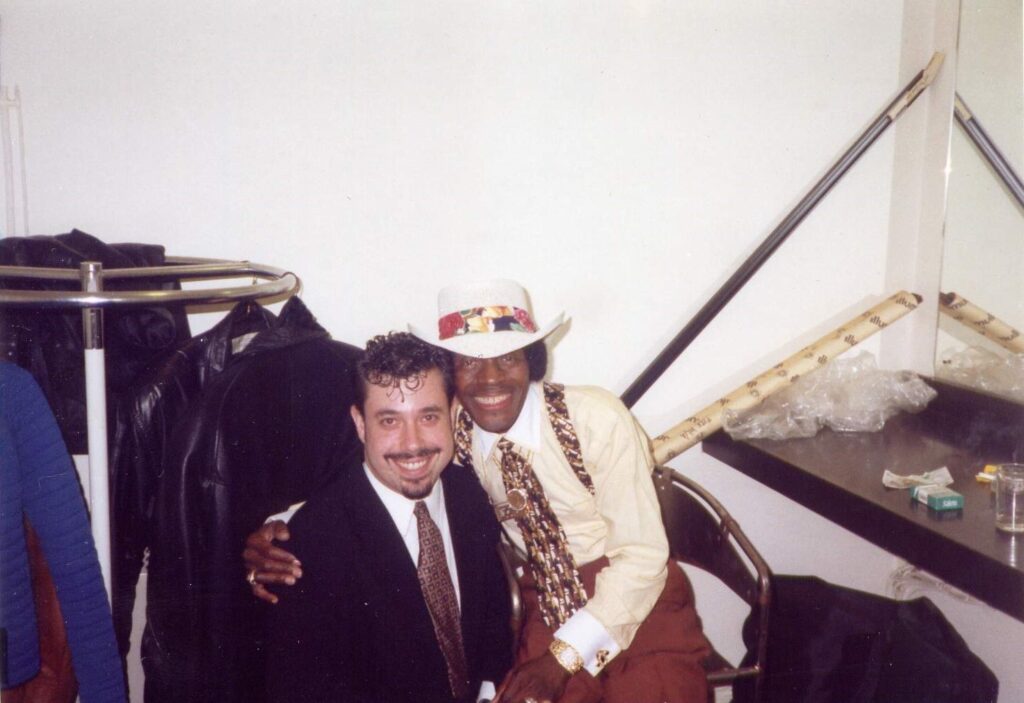
You’ve toured with Otis Rush, played on a ton of blues albums, and even had some Grammy nominations. What did those experiences teach you about the blues and about yourself as a player?
Well, it taught me that all the listening, practicing, and gigging was worth it. If you’d told me in 1991, when I was playing Junior Wells and Otis Rush songs in a Philadelphia-area blues band, that I’d soon be playing with the ACTUAL Junior Wells and Otis Rush, I simply wouldn’t have believed you. I had both their phone numbers in my address book. I could pick up the phone, dial those numbers, and hear “Hello?” coming from the actual mouths of Junior Wells and Otis Rush. It was a trip. I did, though, never stop practicing. I am as humble as they come, as long as virtuosos like Cory Henry walk the Earth, and knowing that Jimmy Smith grew up 25 minutes from where I did. I’m getting better, and it’s also very, very fun to get better. I learn things the old players did AND discover new things of my own every month of every year. Hopefully, more world travel, exciting collaborations, and opportunities will follow as a direct result of that time spent. Either way, I’m enjoying myself in the process.
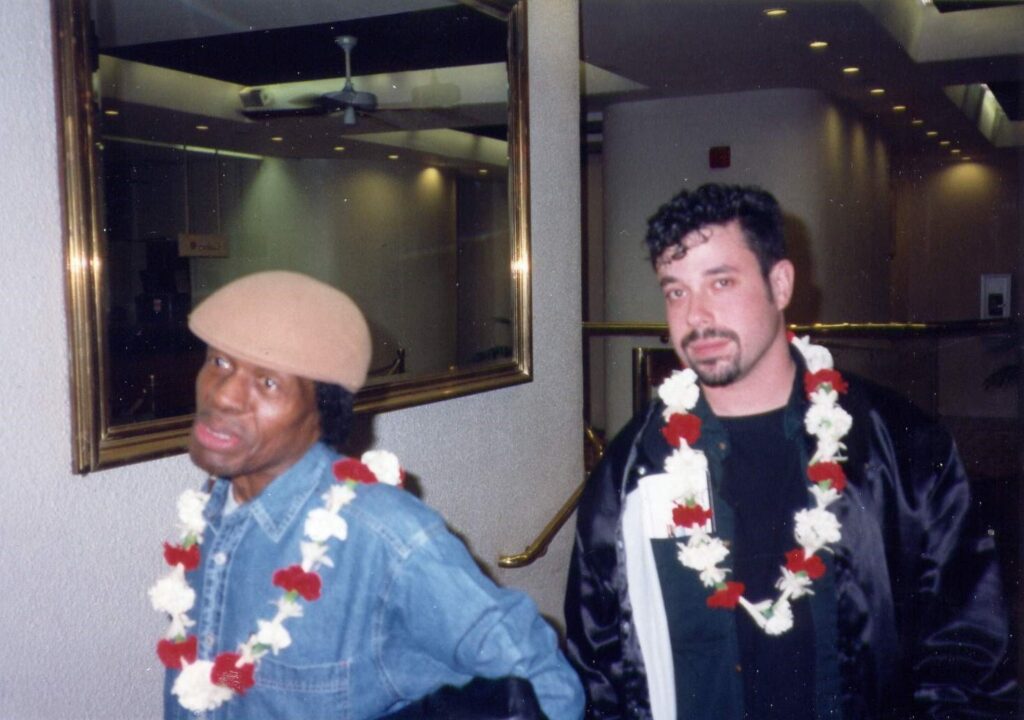
Your influences are all over the map, from Otis Spann to Mike Watt and Captain Beefheart…
…to Satie, Bobby Timmons, Mose Allison, Hüsker Dü, The Clash, Raymond Scott, and Roosevelt Sykes… and yet I DO think I have my own sound. I think people know it’s me when they enter the club.
You’re carrying the Chicago blues torch while also pushing that unique rhythmic, in-the-moment style…
An eternal question is: Should I play what people want, or be the musical weirdo I am, all the way? I would be more successful, probably, as a professional musician if I “kept a lid on it”… on my impulses… but I seem to not be doing that, and I probably won’t change my ways at this point. But I DO commit to learning and practicing more, all the time… both can be the case: learning and practicing while also asserting your individuality.
How does this new album compare to ‘Johnny Iguana’s Chicago Spectacular!’? Were you in a different creative headspace for each, or is this a continuation of that sound?
‘Spectacular’ was a project I developed with producer/friend Larry Skoller, who said he wanted to produce a Johnny Iguana piano album. It was conceived as a tribute to the great history of Chicago blues piano players, and it featured a whole bunch of great players and singers who live in Chicago. Like this new Delmark album, Spectacular mixed classics (done my way) with my own compositions. This new album is much less planned out… less conceived… it’s a snapshot. And I’m proud and happy that Julia and Elbio of Delmark Records saw fit to ask me to contribute a new album to the long line of Delmark solo-piano recordings. It’s a feather in my cap, the very invitation.
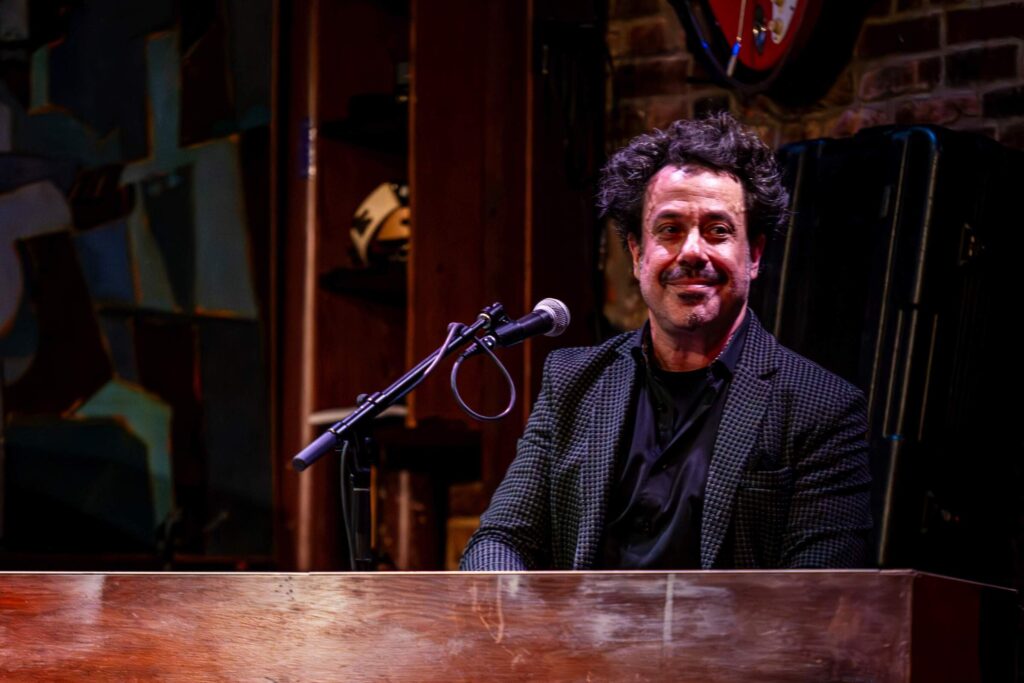
Delmark Records and you go way back, from listening to their records growing up to now releasing albums with them. What’s that relationship been like for you over the years, and how’s it evolved?
The Junior Wells albums ‘Hoodoo Man Blues’ and ‘South Side Blues Jam’ and Magic Sam albums ‘West Side Soul’ and ‘Black Magic’ were huge inspirations on my early blues bands (which started when I was 16 or 17, in the Philadelphia area). I played so many songs off those Delmark albums that I was ready, in a way, when Junior Wells asked me to join his band. I needed to get better on the job, but I knew this sound… I knew these songs… and I had played this music for thousands of hours by age 23. I had my “Cavern Club years,” playing three sets a night. I was a rookie in Chicago at age 23, but a veteran already, in that sense. Julia and Elbio are as excited about the past, present, and future of Delmark Records as I am, clearly. It’s their baby now. I have known Julia and Elbio for about six years now, and it’s been very special to me to be welcomed, as a musician and a person, into the Delmark family.
Klemen Breznikar
Headline photo: Junior Wells and Johnny Iguana | Photo: Linda Cunningham
Johnny Iguana Official Website / Facebook / Instagram / Bandcamp
The Claudettes Official Website / Facebook / Instagram / X / YouTube / Bandcamp
Delmark Records Official Website / Facebook / Instagram / X / YouTube / Bandcamp
Interview with Delmark Records Founder Robert G. Koester
